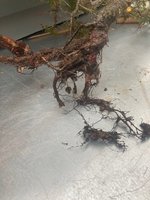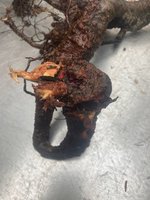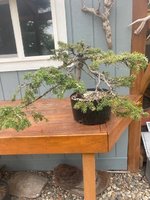I would like to understand the way roots work on the trees that I am digging, mainly conifers like Larch and Pines and other that have tap rots when growing in rocks. I went up high yesterday and collected a neat, small SA Fir that was growing on the edge of a cliff in the rocks. It didn't look real healthy when I got up to it, but I was there and had been looking at it for several years, so away I went with the small pick, and the rock breaker. Right off the bat I uncovered a nice pocket of feeder roots and then a big root that went this way and that way in the small depression and then down through a very narrow crack to who knows where. The root was obviously being pinched as it expanded with growth going down through the crack. I had to cut the tap off where it went down through the crack and don't have a good feeling about the tree's surviving. I don't understand what tap roots are used for besides anchoring. There is usually no feeder roots on taps, they usually go down or away from the tree. I understand feeder roots I think, they feed the tree, so what is the tap root for? I know from experience, that most of the time, if you cut it off, the tree will die. I have always thought the tap's purpose was looking for water in dry areas, but I give the trees plenty of water and it still dies.
Maybe someone could explain the purpose of the root system to me. Thanks in advance
Maybe someone could explain the purpose of the root system to me. Thanks in advance









